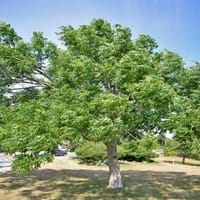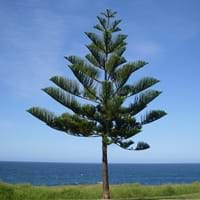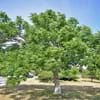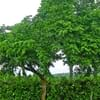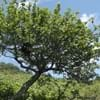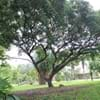Life Span
Biennial
Perennial
Origin
Central United States, Canada
Australia
Types
Two-petal ash, Single-leaf ash, Fragrant ash
not available
Number of Varieties
Not Available
Habitat
Dry areas, Hills, limestone outcrops, Moist woods
Subtropical forests
USDA Hardiness Zone
4-8
9-11
Sunset Zone
2a, 2b, 3a, 3b, 4, 5, 6
H1, H2, 17, 21, 22, 23, 24
Habit
Upright/Erect
Pyramidal
Flower Color
Green, Purple
Green
Flower Color Modifier
Bicolor
Bicolor
Fruit Color
Green, Tan
Green
Leaf Color in Spring
Green
Dark Green
Leaf Color in Summer
Green
Dark Green
Leaf Color in Fall
Yellow, Light Yellow
Dark Green
Leaf Color in Winter
Not Available
Dark Green
Leaf Shape
Pinnate
Needle like
Plant Season
Spring, Summer, Fall
Spring, Summer, Fall, Winter
Sunlight
Full Sun
Full Sun, Partial Sun, Partial shade
Type of Soil
Clay, Loam
Loam, Sand
The pH of Soil
Neutral, Alkaline
Acidic, Neutral, Alkaline
Soil Drainage
Well drained
Well drained
Tolerances
Not Available
Drought, Salt, Soil Compaction
Where to Plant?
Ground
Ground
How to Plant?
Seedlings, Transplanting
Tip cutting
Plant Maintenance
Medium
Medium
Watering Requirements
Average Water Needs
Allow to dry out slightly between watering
In Summer
Lots of watering
Lots of watering
In Spring
Moderate
Moderate
In Winter
Average Water
Average Water
Soil pH
Neutral, Alkaline
Acidic, Neutral, Alkaline
Soil Type
Clay, Loam
Loam, Sand
Soil Drainage Capacity
Well drained
Well drained
Sun Exposure
Full Sun
Full Sun, Partial Sun, Partial shade
Pruning
Remove damaged leaves, Remove dead branches, Remove dead leaves
Prune if you want to improve plant shape, Remove damaged leaves
Fertilizers
All-Purpose Liquid Fertilizer
All-Purpose Liquid Fertilizer, fertilize every 2-3 weeks while growing
Pests and Diseases
Red blotch
Anthracnose, Branch Droop, Root rot, Yellow Leaves
Plant Tolerance
Not Available
Drought
Flowers
Insignificant
Insignificant
Flower Petal Number
Not Available
Not Available
Foliage Texture
Medium
Fine
Foliage Sheen
Matte
Glossy
Attracts
Birds
Not Available
Allergy
Not Available
Not Available
Aesthetic Uses
Not Used For Aesthetic Purpose
Showy Purposes, Used as Christmas tree
Beauty Benefits
Not Available
No Beauty Benefits
Environmental Uses
Air purification, Shadow Tree
Shelter for wildlife, Windbreak
Medicinal Uses
Not Available
Not Available
Part of Plant Used
Inner Bark, Seeds
Whole plant, Wood
Other Uses
Used as a dye, Used for woodware, Wood is used in construction
Used in Furniture
Used As Indoor Plant
No
Yes
Used As Outdoor Plant
Yes
Yes
Garden Design
Shade Trees, Street Trees
Container, Feature Plant, Houseplant, Screening / Wind Break, Shade Trees, Street Trees, Tropical
Botanical Name
FRAXINUS quadrangulata
ARAUCARIA heterophylla
Common Name
Blue Ash
Norfolk Island Pine
In Hindi
Blue Ash plant
नोरफोक द्वीप पाइन
In German
Blue Ash Pflanze
Norfolk-Insel Pine
In French
usine Blue Ash
Norfolk Île Pine
In Spanish
planta de Blue Ash
Norfolk Pine Island
In Greek
φυτό Blue Ash
Νησί Νόρφολκ Pine
In Portuguese
planta Blue Ash
Ilha Norfolk Pine
In Polish
Blue Ash roślin
Norfolk Pine
In Latin
Blue Ash herba
Insula Norfolk Pinus
Phylum
Magnoliophyta
Coniferophyta
Class
Magnoliopsida
Pinopsida
Order
Scrophulariales
Pinales
Family
Oleaceae
Araucariaceae
Clade
Angiosperms, Asterids, Eudicots
Not Available
Tribe
Oleeae
Not Available
Subfamily
Not Available
Not Available
Difference Between Blue Ash and Norfolk Island Pine
If you are confused whether Blue Ash or Norfolk Island Pine are same, here are some features about those plants to help you choose better. Many people think that these two plants have the same characteristics, but one can see Blue Ash and Norfolk Island Pine Information and learn more about it. Fertilizers required for proper growth of Blue Ash are All-Purpose Liquid Fertilizer, whereas for Norfolk Island Pine fertilizers required are All-Purpose Liquid Fertilizer and fertilize every 2-3 weeks while growing. Hence, one should know the basic difference between Blue Ash and Norfolk Island Pine if you are planning to have them in your garden to enhance its beauty.
<
Flowering PlantsImportance of Blue Ash and Norfolk Island Pine
Want to have the most appropriate plant for your garden? You might want to know the importance of Blue Ash and Norfolk Island Pine. Basically, these two plants vary in many aspects. Compare Blue Ash and Norfolk Island Pine as they differ in many characteristics such as their life, care, benefits, facts, etc. Every gardener must at least have the slightest clue about the plants he wants to plant in his garden. Compare their benefits, which differ in many ways like facts and uses. The medicinal use of Blue Ash is Not Available whereas of Norfolk Island Pine is Not Available. Blue Ash has beauty benefits as follows: Not Available while Norfolk Island Pine has beauty benefits as follows: Not Available.
Compare Facts of Blue Ash vs Norfolk Island Pine
How to choose the best garden plant for your garden depending upon its facts? Here garden plant comparison will help you to solve this query. Compare the facts of Blue Ash vs Norfolk Island Pine and know which one to choose. As garden plants have benefits and other uses, allergy is also a major drawback of plants for some people. Allergic reactions of Blue Ash are Not Available whereas of Norfolk Island Pine have Not Available respectively. Having a fruit bearing plant in your garden can be a plus point of your garden. Blue Ash has no showy fruits and Norfolk Island Pine has no showy fruits. Also Blue Ash is not flowering and Norfolk Island Pine is not flowering . You can compare Blue Ash and Norfolk Island Pine facts and facts of other plants too.
